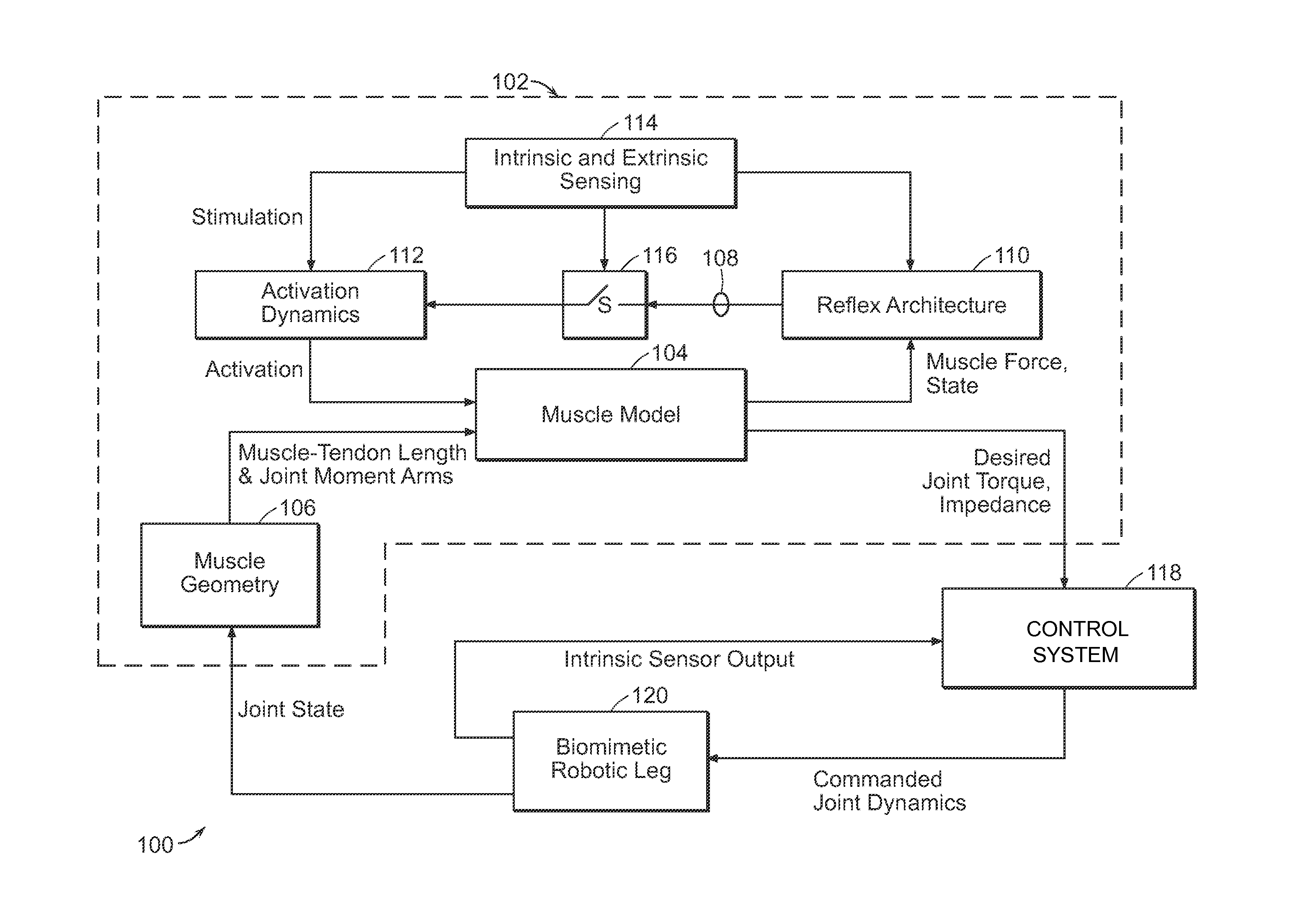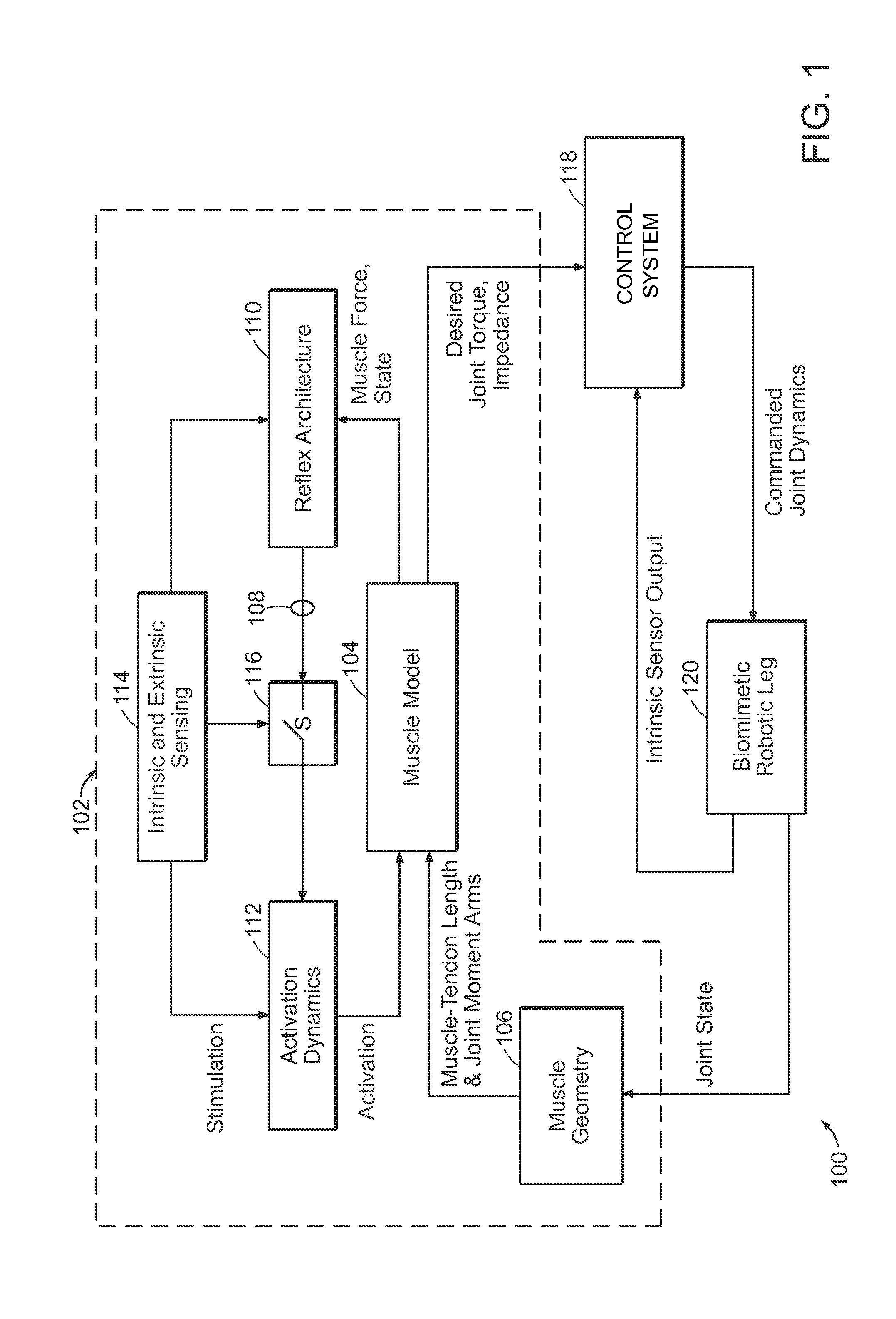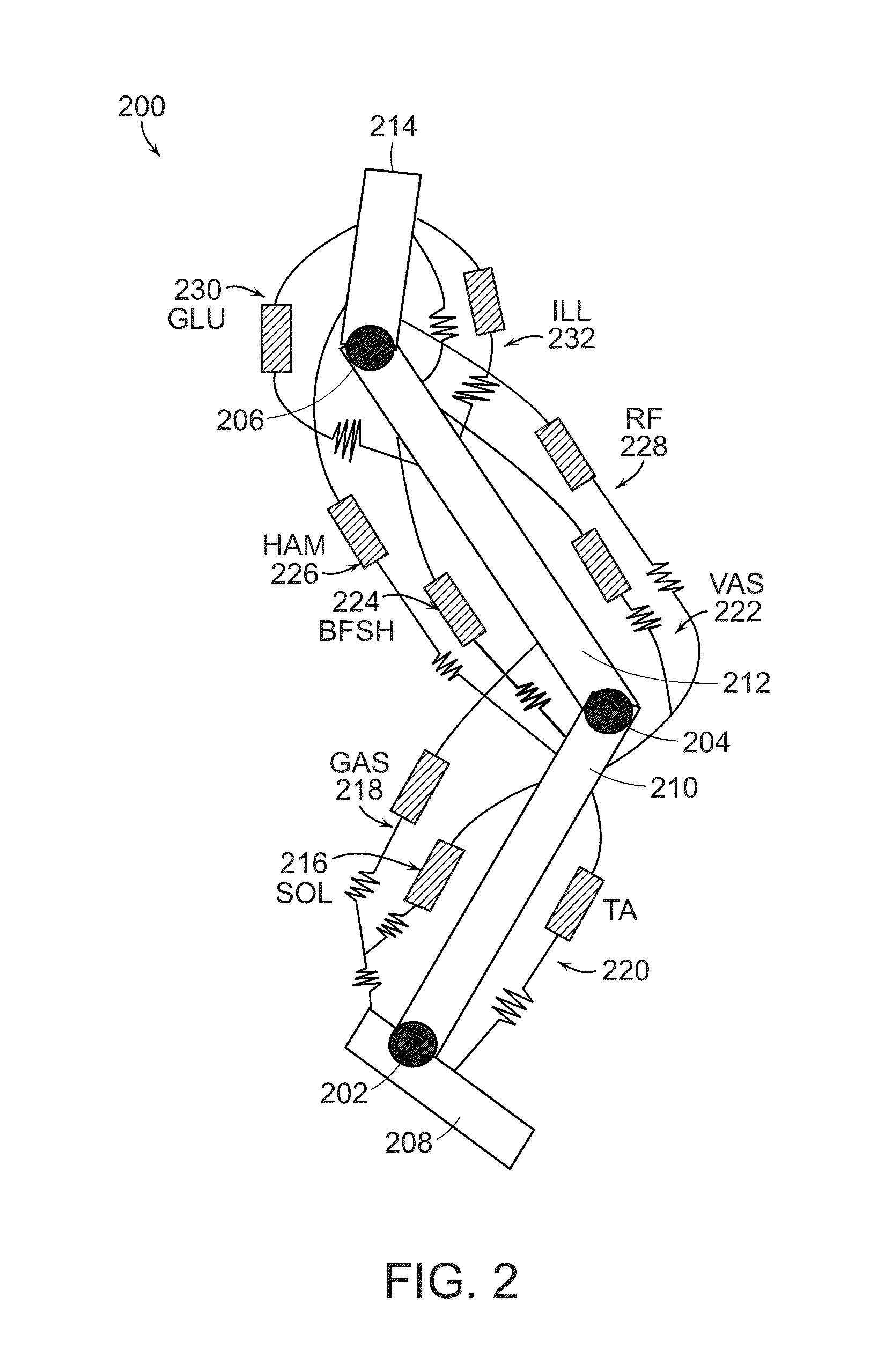Neuromuscular model-based sensing and control paradigm for a robotic leg
a robotic leg and neural model technology, applied in the field of neural model-based sensing and control paradigm of a robotic leg, can solve the problems of only being able to reconfigure the joint angle, not providing sufficient stance phase power, and not being able to adapt biomimetically to changes in terrain slope and walking speed
- Summary
- Abstract
- Description
- Claims
- Application Information
AI Technical Summary
Benefits of technology
Problems solved by technology
Method used
Image
Examples
example i
Human Walking Models
[0069]Two human walking models are described that may be applied in the control of prosthetic, orthotic and exoskeletal components. It is important to note that these are only two of many models that may be used for this purpose. These models do, however, lend themselves well to the task; since they include reflex feedback-based neural control schemes that fit neatly into the framework illustrated in FIG. 1.
a. Neuromuscular Model with Hill-Type Muscle Elements
[0070]In this section, a lumped-parameter neuromuscular model for walking is described that includes Hill-type representations of all the major muscle groups of the leg (FIG. 2). FIG. 2 illustrates neuromuscular model 200 comprising ankle 202, knee 204 and hip 206 joints connected by rigid bodies representing the human trunk 214 and two, three-segment legs, each leg including a foot 208, a shank 210, and a thigh 212. As shown in FIG. 2, nine muscle-tendon units were modeled: soleus (SOL) 216, gastrocnemius (...
example ii
Application of a Neuromuscular Model to Prosthetic Control
[0193]A neuromuscular model of the function of the ankle joint during level ground, self-selected speed walking was developed by Krishnaswamy et al. (Krishnaswamy, P., Brown, E. N., Herr, H. M. (2011) Human Leg Model Predicts Ankle Muscle-Tendon Morphology, State, Roles and Energetics in Walking. PLoS Comput Biol 7(3): e1001107. doi:10.1371 / journal.pcbi.1001107). This model encompassed the inverse step described in Example I (a), supra, but only for the ankle joint. In the following example, we describe the application of this model to control of a powered ankle-foot prosthesis. Emergent speed adaptive behavior was observed using this linear, reflex-based controller. No intrinsic or extrinsic sensing was employed in this example to modulate or tune the reflexive parameters with walking gait speed. Here reflexive parameters include, but are not limited to, thresholds, gains, and exponents on the feedback signals of muscle forc...
example iii
Extrinsic Neural Sensing for the Modulation of Reflexive Parameters
[0283]As mentioned earlier, it may be beneficial to incorporate neural input into model-based control schemes of artificial joints. While there are many ways to obtain such input, one particularly attractive method is the collection of surface EMG data from the residual limb muscles. In this section, we describe the use of EMG signals to directly modulate the parameters of a reflexive control scheme. In this example, the EMG signal is measured using surface EMG signals from electrodes sewn into a socket liner used by a transtibial amputee. These EMG signals were filtered and used to modify feedback gains, producing adaptive behavior with walking speed and stair ascent / descent. We expect that additional advances in neural sensing technology will allow even more meaningful data to be input to robotic prostheses, orthoses and exoskeletons, enabling further adaptive behavior.
EMG Control of Prosthetic Ankle Plantar Flexio...
PUM
 Login to View More
Login to View More Abstract
Description
Claims
Application Information
 Login to View More
Login to View More - R&D
- Intellectual Property
- Life Sciences
- Materials
- Tech Scout
- Unparalleled Data Quality
- Higher Quality Content
- 60% Fewer Hallucinations
Browse by: Latest US Patents, China's latest patents, Technical Efficacy Thesaurus, Application Domain, Technology Topic, Popular Technical Reports.
© 2025 PatSnap. All rights reserved.Legal|Privacy policy|Modern Slavery Act Transparency Statement|Sitemap|About US| Contact US: help@patsnap.com



